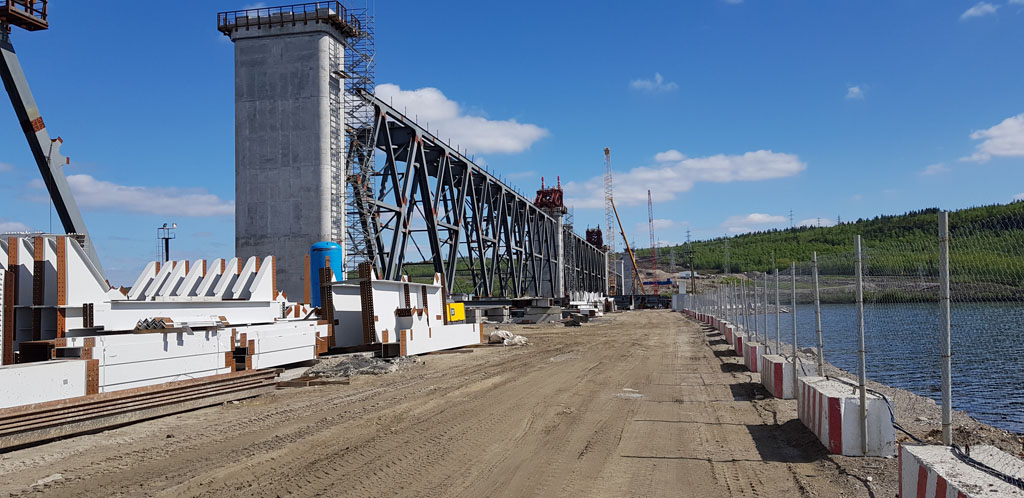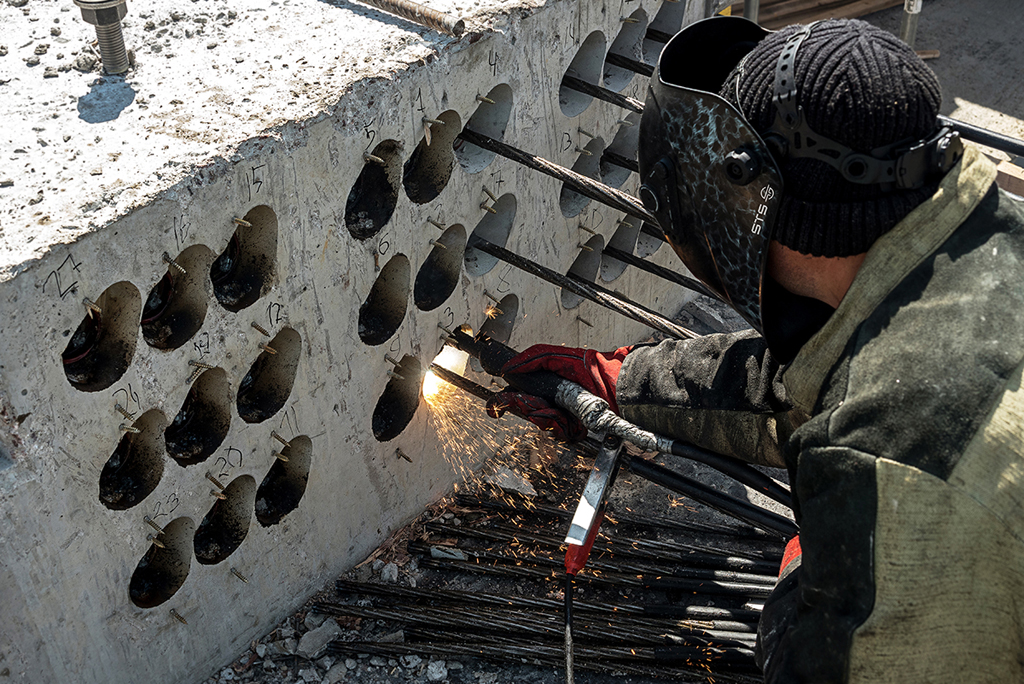Heavy lifting
STS has developed its Strand Heavy Lifting System post-tensioning systems and has been continuously improving it over the years.
Strand jacks lift, slide, support and carry large and heavy loads in a straight line. Robust but compact, they are ideal for situations where space for other heavy lifting equipment is limited.
Jacks use 7 wire strands, a type of braided wire with more flexibility than solid steel. Jacks are hollow on the inside and have two sets of wedges, one at the top and one at the bottom. These wedges alternately grip and release the strands. The system is lifted by following the sequence of pulling and gripping the set of ropes attached to the load.

STS performed Heavy Lifting and Holding for 2 weeks a 900 tonnes steel roof of the railway station in Sochi (Russia).
A strand jack is lightweight when considered as a stand-alone machine and also does not take up much space. These devices are ideal for use in construction processes where there may be a need to lift material weighing several tonnes or thousands of tonnes.
These hydraulically powered lifting devices use combined gripping and lifting forces to provide a continuous linear movement. This movement is then used to lift the load, and to a greater height. You can also use them in confined areas and they are quite easy to work with.
Unlike cranes, which experience this because of the angle at which their arms are positioned, strand jacks apply their force in a straight line over the load. This means that they can lift the same weight all the time without losing load capacity.
Due to their small footprint, they are suitable for tight spaces. The combined use of multi-strand jacks provides a more concentrated lifting capacity. When projects require simultaneous and synchronised operation of several jacks, they are coordinated and controlled by computers.

STS Heavy Lifting Strand jacks can also be used where large cranse are not available. Railcar unloading with 250 tonnes gas turbine Perm (Russia).
Cranes are tall devices that have been used for high-rise construction since the last century. But with the huge developments in construction technology, hydraulically powered strand jacks have proved to be much better than the older machines for lifting heavy loads. As far as cranes are concerned, activities such as mobilising and demobilising equipment, installing boom structures, finding properly trained personnel to operate the devices, etc. etc. can be tedious. Also, cranes are heavier than jacks, so their actual operation takes longer. Compared to cranes, the jack design is lighter and requires a minimum of personnel to operate. The installation and use of the jack is also much easier, which makes it very important for the construction of high-rise buildings and towers.
Strand jacks
A jack with lifting strand basically consists of a jack with a centre hole, upper and lower anchors and a lifting chair.
The centre hole jacks are specially manufactured for this purpose. The upper anchorage is attached with an adapter to the centre hole jack and is moving up and down with the piston. The lower anchorage is attached on the base plate within the jack chair. The lifting jack is connected to the top of the chair, which is bolted to the base plate. This plate is the link between the lifting jack and the structure.
Tensioning elements
High tensile steel strands with a nominal diameter of 0.6 inch and an area of 140 mm2 are used to form a tensile element.
The advantage of the strands is that their specific bearing capacity is extremely high and they can be cut to any length. The number of strands per cable will vary depending on the load to be moved and the number of jacks used.
The same strands can be used several times for lifting, lowering or horizontal shifting.

STS Heavy Lifting 1000 tonnes load to 60 meters at the Bridge to Russky Island, Vladivostok (Russia)
Anchoring
Anchorages originate from elements of different post-tensioning systems and are adapted to the requirements of lifting technology. Anchorages are integral parts of the jack for lifting rope. End anchors are used to receive loads.The end anchor can be applied directly to the load or inside the connecting piece attached to the load.
Connectors
With connection element Load capacity of up to 600 t per connection element Flexibility on one axis Quick changeover when using different connection points
High pressure hydraulic power units
Various synchronous pump units are used to generate hydraulic pressure. The highest demands are placed on simultaneity, tightness and operational safety. The hydraulic pump unit is not a safety-relevant part of the lifting cable system, but is a decisive factor for synchronous lifting with several lifting units. Simple operation, high operating security, simple maintenance and compatibility were a focus at the development stage. The pump units are designed specifically for use in lifting technology and can work with different lifting units individually or together with different controls. Hydraulic and electric safety limiters prevent overloading.
Control system
STS has various control systems. From the simplest control panel to a complex computer-controlled station with a variety of control and regulation functions, the control can be combined in modular form for each lifting operation. The various pressure and distance control systems can be used together or individually.
The STS fleet includes more than 100 hydraulic jacks with individual lifting capacities from 30 to 1,500 tonnes.
Heavy Lifting a span of the bridge, 1300 tonnes, Murmansk (Russia)
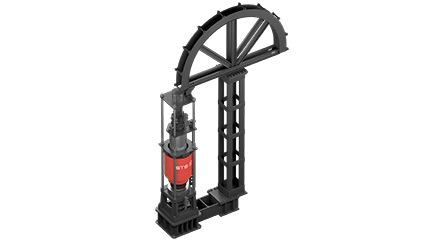
Specialized equipment for tensioning reinforcement elements and moving structures.
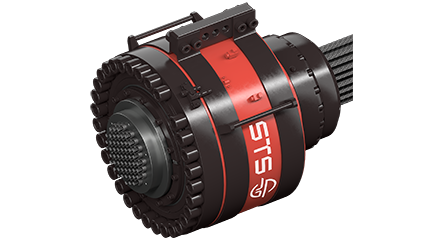
Equipment for construction with post-tensioning and prestressing technology.
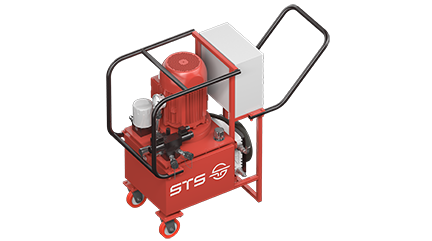
Hydraulic power units (power packs) - system that applies hydraulic pressure to drive cylinders and motors of a given hydraulic system.
